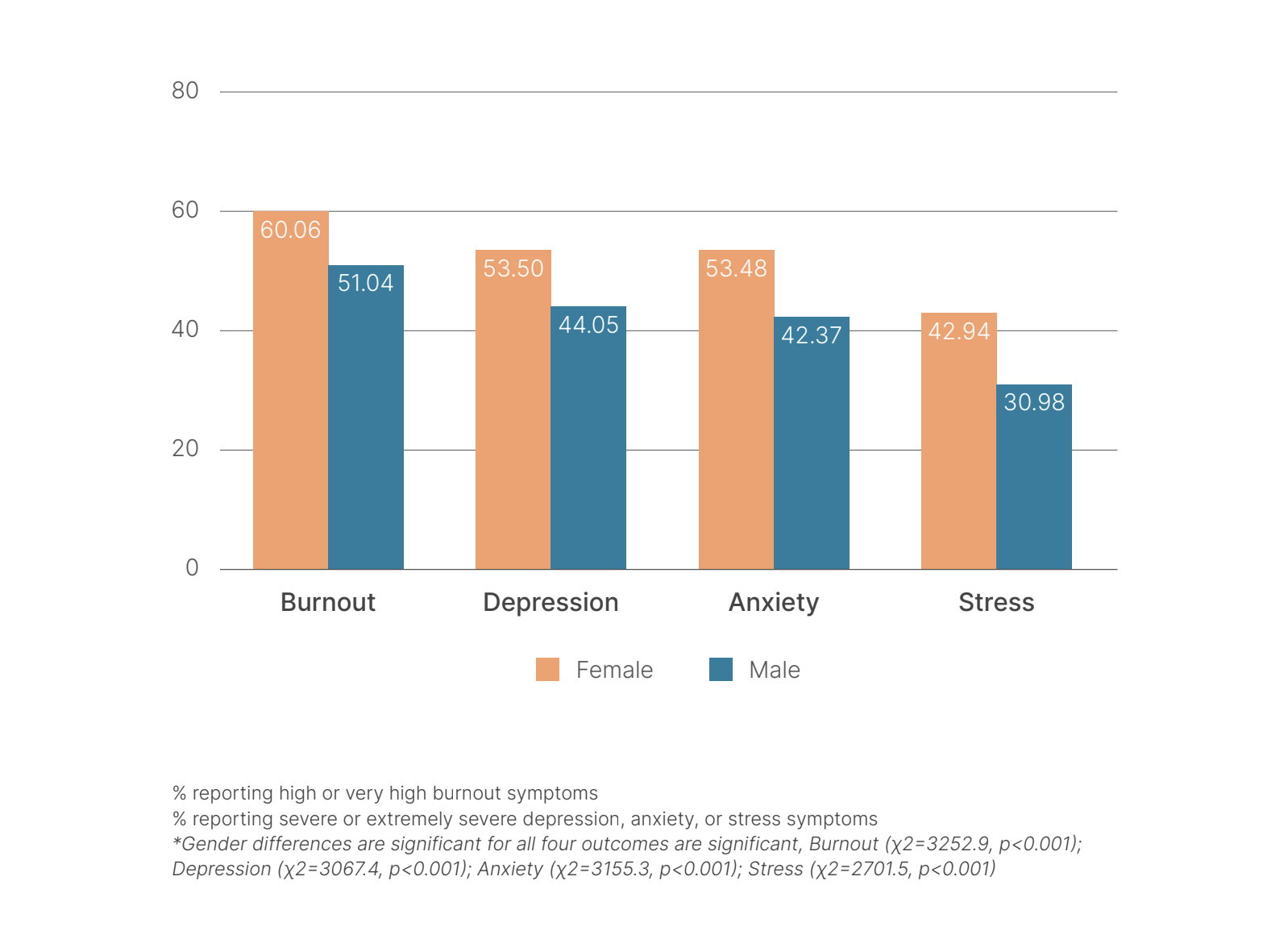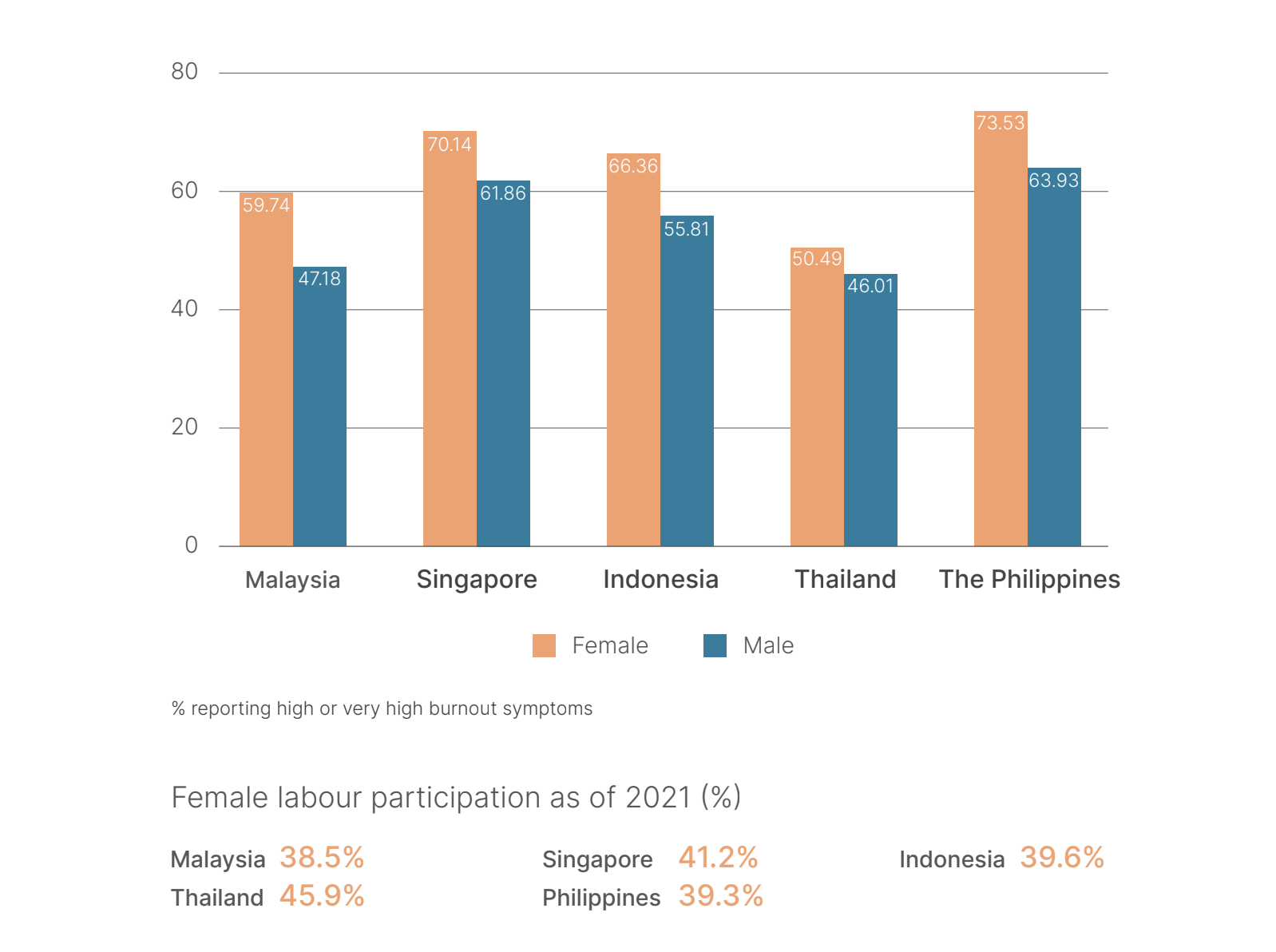Naluri surveyed over 13,000 full-time employees across five Southeast Asian countries - Malaysia, Singapore, Indonesia, Thailand, and the Philippines - who completed the Burnout Assessment Tool (BAT-12) and Depression, Anxiety, and Stress Scales (DASS-21). We found that women are more burned out than men, with an alarming rate of 60% of female employees in the region reporting high burnout levels – 1.25 times higher than their male counterparts. Only 51% of men in the region reported the same.

The gender difference in burnout is comparable to the gender differences in depression, anxiety, and stress, with female employees reporting 1.24-1.42 times higher severity than male employees.

Furthermore, a breakdown of our data by country shows that the burnout gender gap exists across the region, with the biggest differences seen between male and female employees in Malaysia (χ2= 1365.2, p<0.001), Indonesia (χ2= 395.21, p<0.001), and the Philippines (χ 2= 613.42, p<0.001). Given that female labour participation in these five countries range from 38%-46%, addressing the gender burnout gap is imperative to ensure that the struggles of a significant portion of the workforce are not being overlooked.
Download the Naluri Gender Burnout Gap in Southeast Asia White Paper to find out:
- The gender differences in employee burnout and mental health
- The gendered barriers in the workplace and the gendered pathways to employee burnout
- Top recommendations for organisational policies that challenge workplace gender bias and stereotypes
